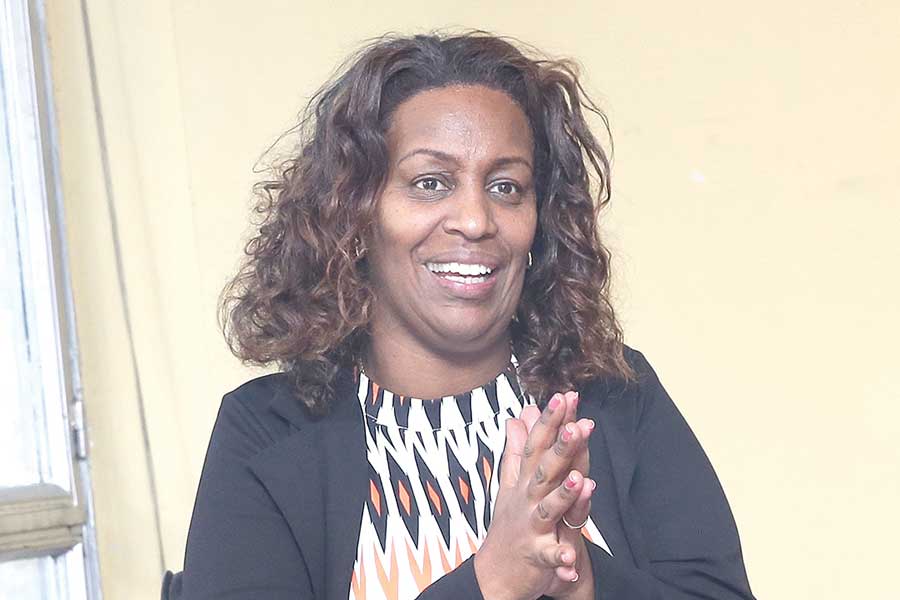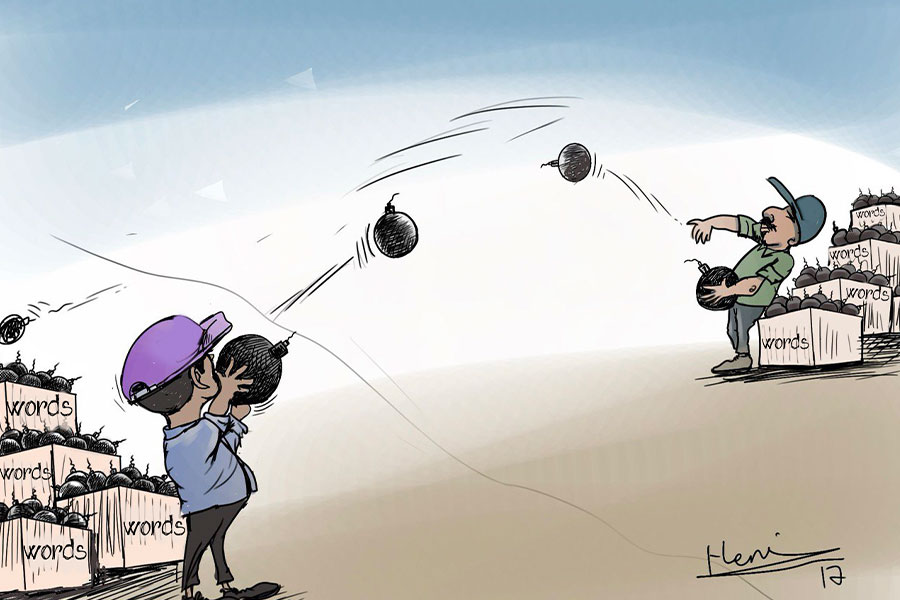
Radar | Apr 12,2020
A Chinese firm has been awarded a contract to complete the remaining construction work at the Tana Beles I Sugar Factory, recently repossessed by the state-owned Sugar Corporation from the state-owned Metals & Engineering Corporation (MetEC).
China CAMCE Engineering will complete the factory along with the construction of substations and transmission facilities for electric power generation under a contract valued at 95 million dollars. CAMCE already started work on the construction of the factory, which will have a production capacity of 8,000ql to 10,000ql of sugar a day.
The substation will enable the plant to get high voltage electric power from the national grid through a large gauge wire. The transmission line takes the electric power to the factory to crush sugarcane, which produces ethanol fuel as byproduct that is also used to run the plant. The transmission line will also return the remaining power to the grid.
The remaining work at Tana Beles I accounts for 35pc of the whole project, according to an assessment conducted by Kenana Engineering & Technical Solutions, a Sudanese firm. CAMCE is expected to make the factory operational within eight months, while an additional six months is required for the construction of substations and transmissions.
The factory will be fully completed in 14 months, according to Gashaw Aycheluhem, corporate communications executive officer of the Sugar Corporation.
The contract for Tana Beles I Sugar Factory was awarded to China CAMCE Engineering to complete the remaining construction work under a contract valued at 95 million dollars.
MetEC, the state military-industrial conglomerate, was awarded the project in March 2011, but the agreement was revised the following year. According to the revised contract, the Corporation was supposed to deliver the project in a year and the half period, but it was still uncompleted by 2018 when the contract was rescinded.
CAMCE has completed Welkait Sugar Factory, located 1,300Km from Addis Abeba in Tigray Regional State. The plant has a production capacity of 484,000tn of sugar and 41,654 cubic metres of ethanol a year. The sugar factory also incorporates 50,000ha of land for sugarcane cultivation.
CAMCE has also constructed the recently inaugurated Omo-Kuraz III Sugar Factory, built at a cost of more than eight billion Birr. Omo-Kuraz III became the eighth operational sugar factory in the country with a capacity of producing 8,000ql to 10,000ql of sugar a day.
Omo-Kuraz III joined the seven other operational sugar factories of Wonji Shoa, Metehara, Fincha, Tendaho, Arjo Dediessa, Kessem and Omo Kuraz Sugar Factory II. The factories will process sugar for the nation, which has a demand of 6.5 million quintals to seven million quintals of sugar a year. To meet national demand, Ethiopia imported 4.14 million quintals of sugar two years ago.
The other project was rescinded from MetEC is Omo Kuraz I Sugar Factory, after it reached 80pc completion. Omo-Kuraz I has a processing capacity of 8,000tn of sugarcane per day (TCD) to 10,000 TCD. MetEC was ousted from the project last year, after Prime Minister Abiy Ahmed (PhD) came to power.
To complete the project, the Sugar Corporation is evaluating the technical and financial documents of Jiangxi Jianglian International Engineering (JJIEC). The company is currently constructing the Omo-Kuraz VI Sugar Factory with a processing capacity of 24,000 TCD.
The two projects were part of the government's attempt to construct 10 sugar factories having a production capacity of 6,000 TCD to 24,000 TCD by cultivating 320,000ha with sugarcane. The projects were launched at the beginning of the first edition of the Growth & Transformation Plan (GTP I) in 2010.
Ten sugar factories - five in Omo-Kuraz, three at Tana Beles, one at Qeesem and one in Welkait - have been planned, and Omo-Kuraz II and III and Qeesem have been put into operation.
The government plans to produce 40.7 million quintals of sugar, 181,604 cubic meters of ethanol and generate 101MW of electric power through these sugar projects. The government has also plans to generate 1.2 billion dollars in sugar exports.
Even though all of the projects were awarded to MetEC, only three of the projects remained in the hands of the Corporation due to delays.
Planning to build 10 sugar projects at a time was a bad idea from the beginning, according to Tadesse Emiru, head of Business and Economics at Bahir Dar University.
Before launching mega projects, the state should see things from multiple dimensions and perspectives, including adequacy of the budget, the feasibility of the project and project management efficiency of companies, according to Tadesse.
"Also, the government should get out of the sugar production business and instead work on incentivising and encouraging the private sector to engage in sugar investments," he said.
PUBLISHED ON
Apr 06,2019 [ VOL
19 , NO
988]

Radar | Apr 12,2020

Fortune News | Feb 08,2020

Radar | Sep 24,2022

Fortune News | May 16,2020

News Analysis | Jan 01,2022

Dec 22 , 2024 . By TIZITA SHEWAFERAW
Charged with transforming colossal state-owned enterprises into modern and competitiv...

Aug 18 , 2024 . By AKSAH ITALO
Although predictable Yonas Zerihun's job in the ride-hailing service is not immune to...

Jul 28 , 2024 . By TIZITA SHEWAFERAW
Unhabitual, perhaps too many, Samuel Gebreyohannes, 38, used to occasionally enjoy a couple of beers at breakfast. However, he recently swit...

Jul 13 , 2024 . By AKSAH ITALO
Investors who rely on tractors, trucks, and field vehicles for commuting, transporting commodities, and f...

Jul 5 , 2025
Six years ago, Ethiopia was the darling of international liberal commentators. A year...

Jun 28 , 2025
Meseret Damtie, the assertive auditor general, has never been shy about naming names...

Jun 21 , 2025
A well-worn adage says, “Budget is not destiny, but it is direction.” Examining t...

Jun 14 , 2025
Yet again, the Horn of Africa is bracing for trouble. A region already frayed by wars...